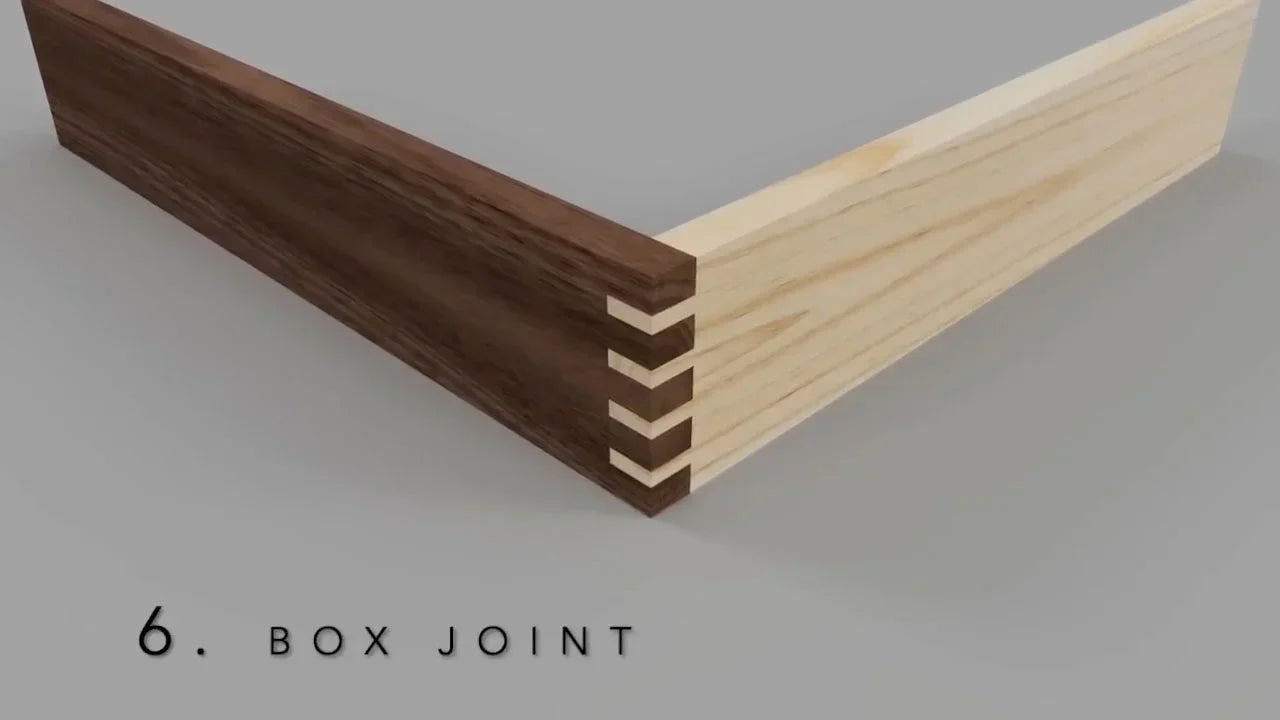Joinery is a major woodworking task that combines wood pieces to produce complex and beautiful woodwork. Different types of wood joints are used for various woodworking activities. The following describes 7 basic and common types of woodworking joints and their uses.
1. Butt Joint
The butt joint is a simple type of joint in which the connected boards are placed directly together, face to face, edge to edge, or side to side, which lacks its fixing mechanism. As a result, this type of joint is relatively prone to loosening and requires metal nails, screws, etc. to maintain the connection.
Uses: furniture such as chairs, tables, dressers, and cabinets.
1. Butt Joint
The butt joint is a simple type of joint in which the connected boards are placed directly together, face to face, edge to edge, or side to side, which lacks its fixing mechanism. As a result, this type of joint is relatively prone to loosening and requires metal nails, screws, etc. to maintain the connection.
Uses: furniture such as chairs, tables, dressers, and cabinets.

2. A Mitered Butt Joint
In a mitered joint, the boards are cut and joined at a 45-degree angle to form a right angle. This joint is prone to loosening and usually requires reinforcement by mortise and tenon nails, grooved tongues, or mechanical fasteners.
Uses decorative molding and framing.

3. Pocket Joint
A pocket joint consists of a butt joint with pocket hole screws. The pocket hole joint requires two drilling operations:
A. Countersink the pocket, which requires the use of a wood piece with a screw head.
B. Drill a pilot hole with the same centerline as the pocket hole.
Uses: picture frames; door frames.

4. Dado Joint
Dado joints are one of the solid types of woodworking joints; they consist of a three-sided channel in one workpiece that runs across the grain of the wood into which another workpiece fits. Because the workpiece is captured on all three sides, Dado joints are incredible sheer resistance.
Uses: shelving; cabinets.

5. Mortise & Tenon
Mortise and tenon construction is one of the strongest wood joints in construction, characterized by using wood under pressure to transmit strength. It is one of the classic wood joint methods used in the early woodworking days. A mortise and tenon joint is made by tapering one end of a piece of wood at 90 degrees and inserting it into the cavity of another piece of wood. The insertion of the mortise and tenon allows the structure to accommodate a certain degree of deformation when subjected to horizontal external forces. This unique, flexible structural body is not only able to withstand large loads but also allows for a certain amount of deformation.
Uses: furniture making: to secure the wooden components of tables, chairs, and legs at a right angle to the other parts.

6. Box Joint
The box joint is an excellent alternative wood joint to the dovetail joint. It is applied to the edges of wood pieces, bringing them together vertically, correctly, and seamlessly to form 90-degree corners. The wood pieces fit together perfectly through symmetrical rectangular grooves. Apply wood glue to strengthen the box joint and form sturdy corners.
Unlike dovetail joints, box joints are easy to create while providing excellent strength. Despite this, dovetail joints are still superior to box joints in strength.
Uses: storage bins; construct various box shapes.

7. Biscuit Joint
The biscuit joint is a strong, non-traditional woodworking joint. In a Biscuit joint, an oval-shaped piece of woodwork is glued into two crescent-shaped wood holes. This type of joint, similar to a tongue and groove joint, is useful in joining boards along the edge. The cookie joint is considered a modern woodworking joint and is also known as a sturdier version of the butt joint.
Both ends of the wood pieces are cut into small round pieces that serve as the joint between them. When wood glue is added, it expands until it fills the gap. This makes the cookie joint very strong when joined.
Uses: boxes; drawers.

These are the 7 most common woodworking joints used in woodworking activities. It's also crucial to prioritize personal safety during woodworking, including wearing a dust mask, goggles, headphones, etc. If you know other ways, please share them in the comment section and let us know.
#types of wood joints
Awesome pictures from @EricBrennan



Share:
Woodshop Dust Control Solutions
Quick Tips: How to Clean and Maintain Your Miter Saw